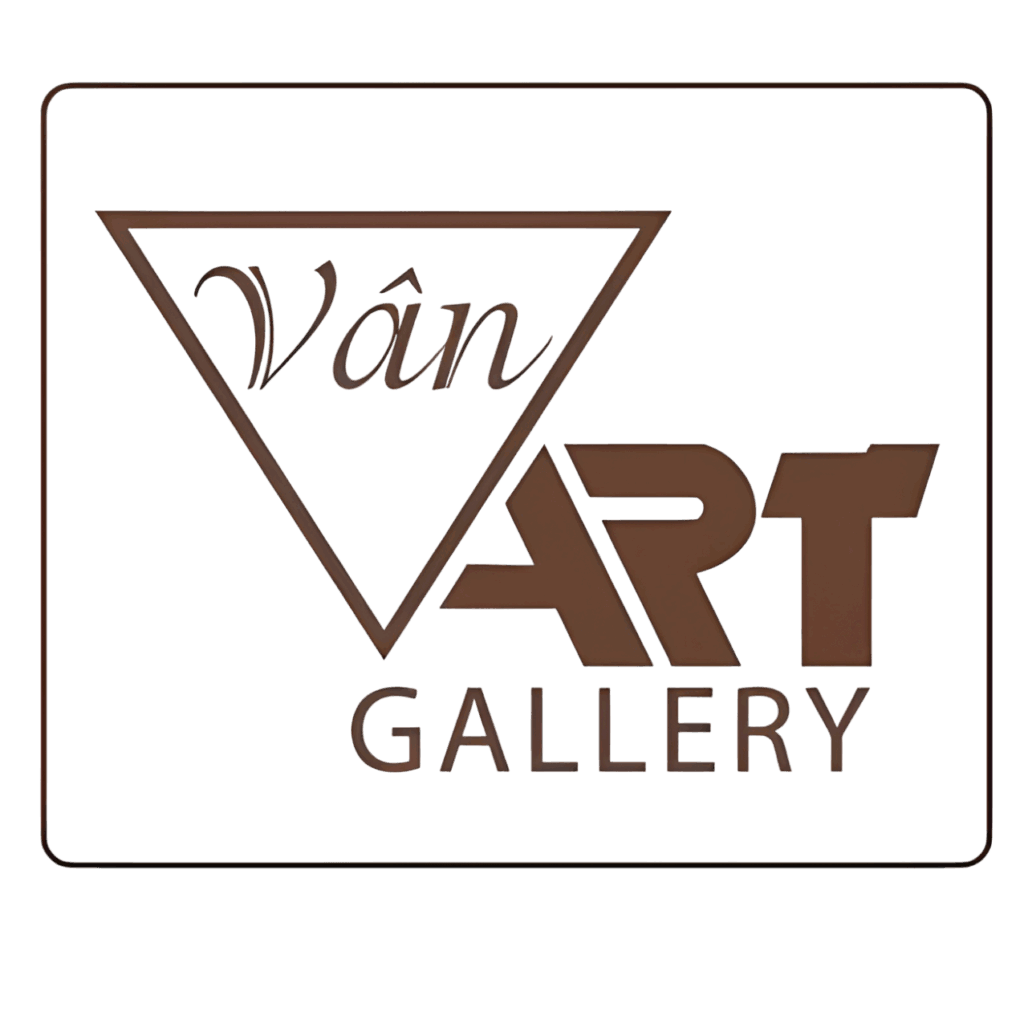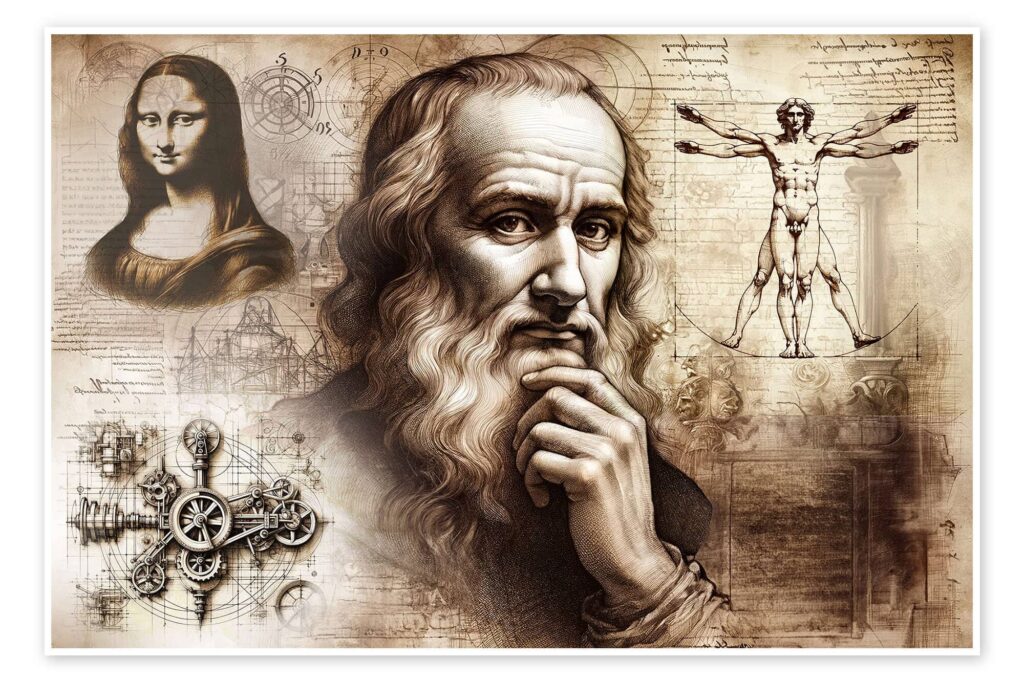Introduction to Leonardo da Vinci
Leonardo da Vinci (1452–1519) is an enduring icon of the Renaissance, a polymath whose groundbreaking contributions in art, science, and engineering transcended his era. From the enigmatic Mona Lisa to the iconic Vitruvian Man, his work has shaped modern art and thought, inspiring collections worldwide, including those at the Vietnam art gallery. In this article, we will explore Leonardo da Vinci’s biography, his most celebrated artworks, his innovative painting techniques, and his profound contributions to the Renaissance. Join us to uncover why Leonardo da Vinci remains an eternal source of inspiration for humanity!
Biography of Leonardo da Vinci
Who Was Leonardo da Vinci?
Leonardo da Vinci’s biography begins in the small town of Vinci, Italy, where he was born in 1452 to a notary father and a peasant mother. According to the Louvre Museum, Leonardo displayed exceptional artistic talent and a deep curiosity about nature from a young age. In 1466, he moved to Florence and apprenticed under Andrea del Verrocchio, where he honed his distinctive style.
- Early Years (1466–1482): In Florence, Leonardo mastered painting and sculpture, creating early works like The Adoration of the Magi.
- Milan Period (1482–1499): Working for Ludovico Sforza, he produced masterpieces like The Last Supper while delving into anatomy and engineering.
- Later Years (1506–1519): Serving in Rome, the Vatican, and France, he left a lasting legacy with works like the Mona Lisa and scientific sketches.
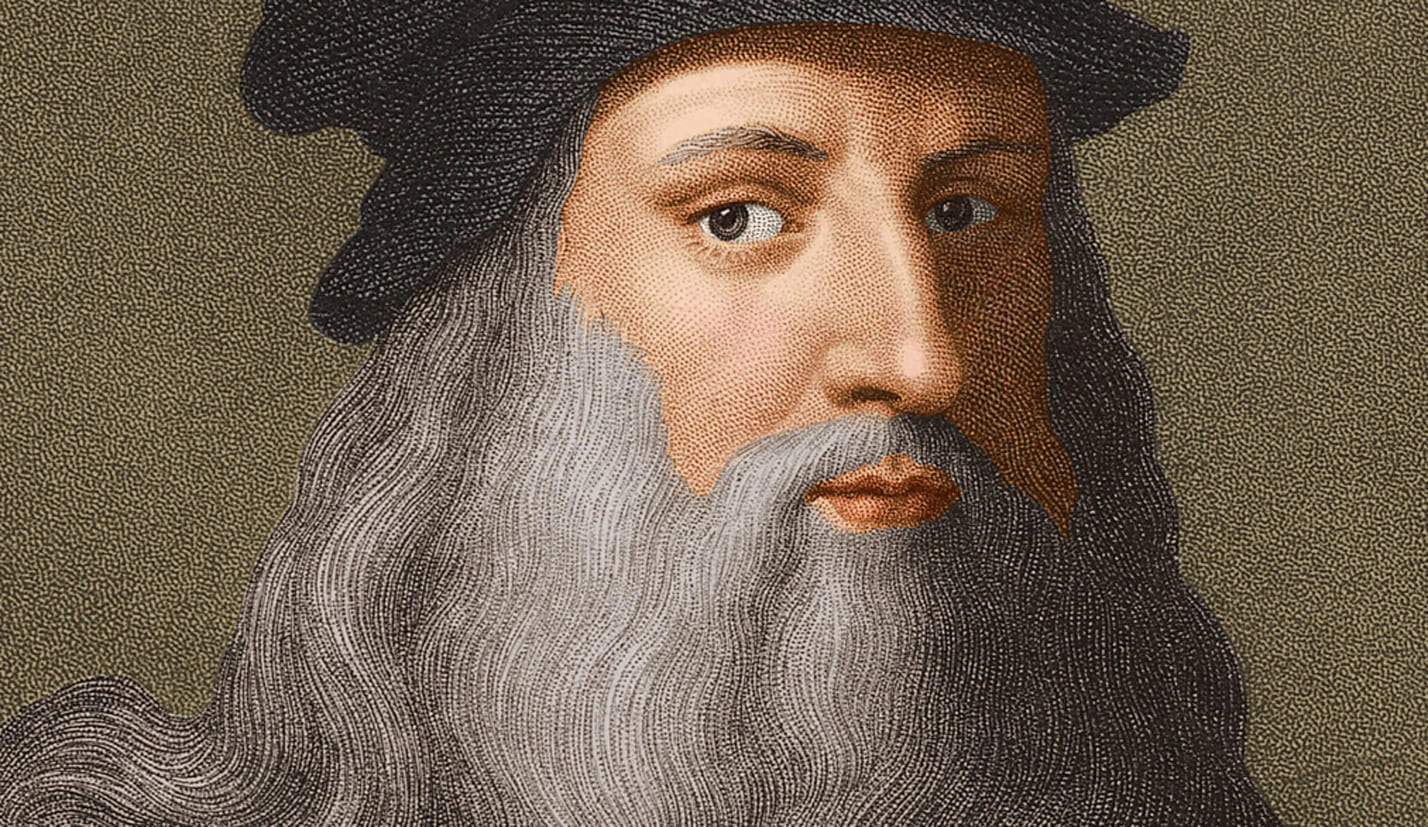
Leonardo da Vinci’s Personal Life
Leonardo da Vinci led a private life, remaining unmarried and rarely discussing personal matters. He formed close bonds with students like Salai and Melzi, dedicating himself to art and research. According to Giorgio Vasari, Leonardo was charismatic, morally upright, and deeply truthful. A vegetarian, he often bought caged birds to set them free, reflecting his love for nature.
“The time will come when men will look upon the murder of animals as they now look upon the murder of men.” – Leonardo da Vinci (from The Notebooks)
Leonardo da Vinci’s Artworks
What Are Leonardo da Vinci’s Most Notable Artworks?
Leonardo da Vinci’s artworks are the pinnacle of Renaissance art, blending masterful technique with profound emotion. Below are some of his most iconic works:
-
- Mona Lisa (1503–1506)
- Description: A portrait of a Florentine lady with a mysterious smile, displayed at the Louvre Museum.
- Features: Utilizes the sfumato technique for seamless color transitions.
- Significance: A global art icon, attracting millions of visitors annually.
- Mona Lisa (1503–1506)
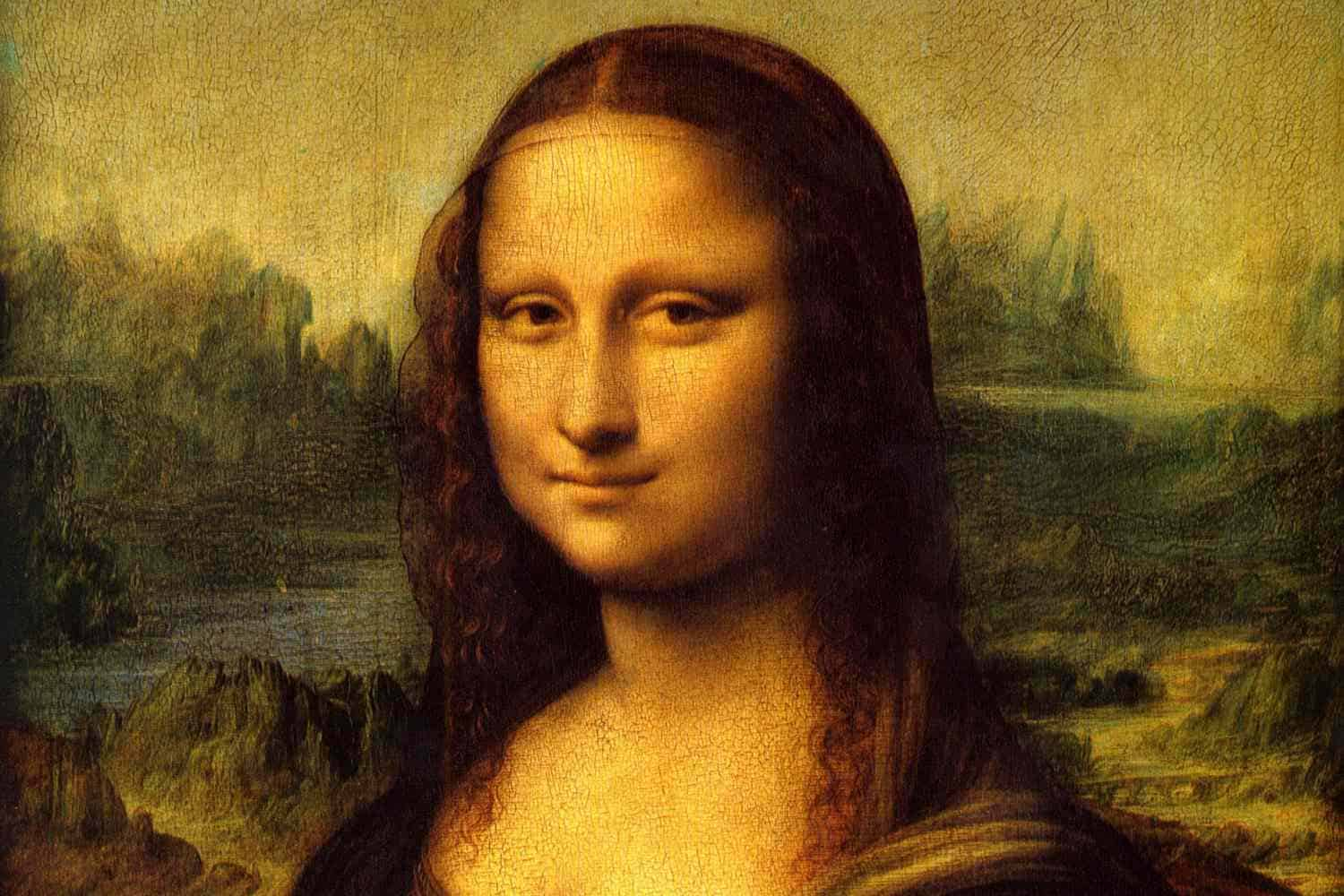
- The Last Supper (1495–1498)
- Description: A mural at the Santa Maria delle Grazie convent in Milan, depicting Jesus announcing his betrayal.
- Features: Balanced composition with intense emotional expressions.
- Significance: One of the greatest religious paintings in history.
- Vitruvian Man (1490)
- Description: A sketch studying human proportions, inspired by the architect Vitruvius.
- Features: Combines art, science, and mathematics.
- Significance: A symbol of harmony between humanity and the universe.
- Virgin of the Rocks (1483–1486)
- Description: A painting of the Virgin Mary in a natural setting, without traditional halos.
- Features: Uses chiaroscuro for dramatic light and shadow effects.
- Significance: Represents innovation in religious art depiction.
Why Do Leonardo da Vinci’s Artworks Endure?
Leonardo da Vinci’s artworks stand the test of time due to their fusion of art and science. According to the Uffizi Gallery, his pioneering use of sfumato and chiaroscuro revolutionized painting, creating depth and emotion previously unseen. These works are not just paintings but narratives about humanity and the cosmos, resonating across centuries.
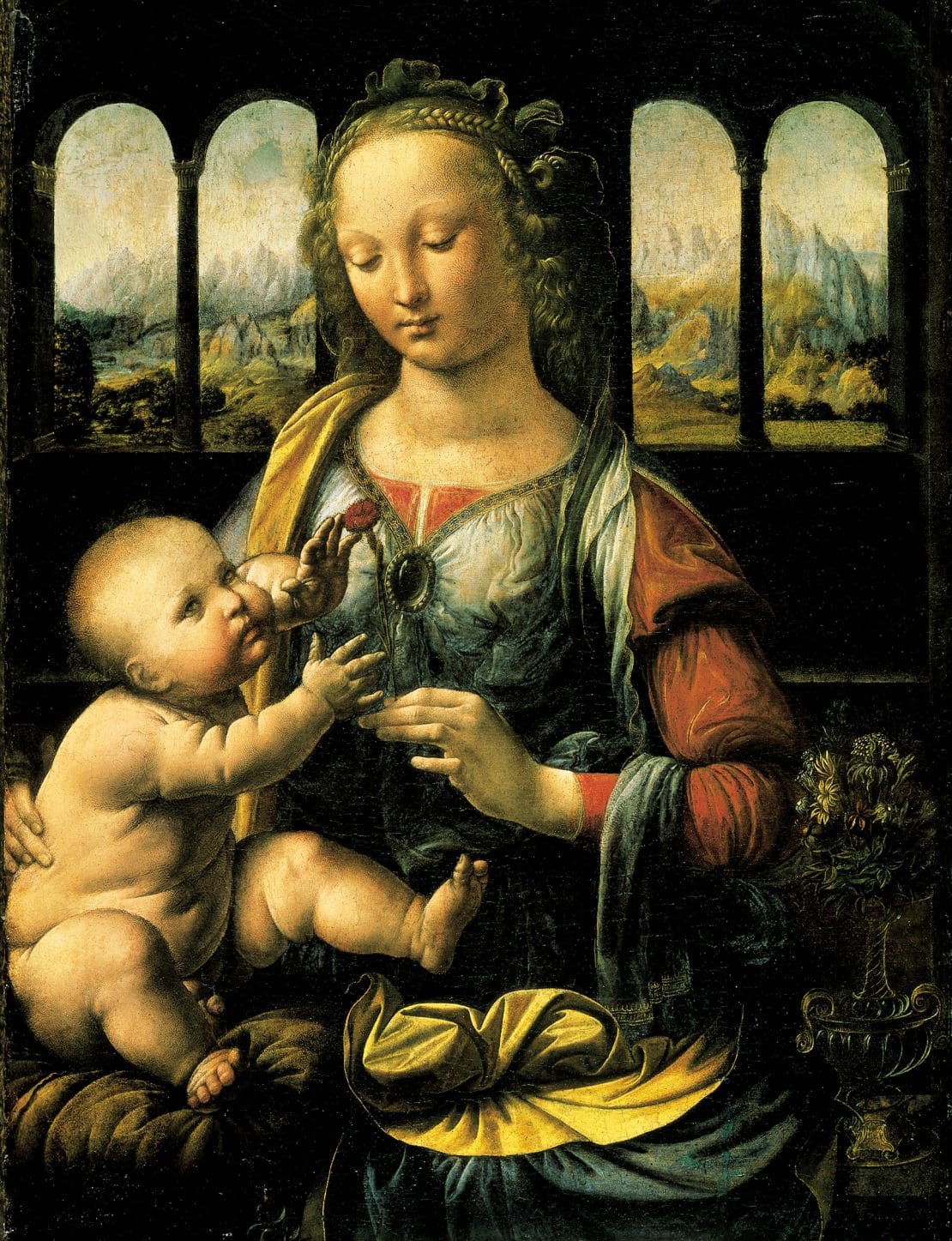
Leonardo da Vinci’s Painting Techniques
What Makes Leonardo da Vinci’s Painting Techniques Unique?
Leonardo da Vinci’s painting techniques defined Renaissance art and influenced generations of artists. His two most notable techniques are:
-
- Sfumato:
- Definition: A technique that softens boundaries between colors, creating smooth transitions.
- Application: Used in the Mona Lisa to craft her enigmatic smile and lifelike expression.
- Example: The seamless blending of light and shadow on the Mona Lisa’s face.
- Sfumato:
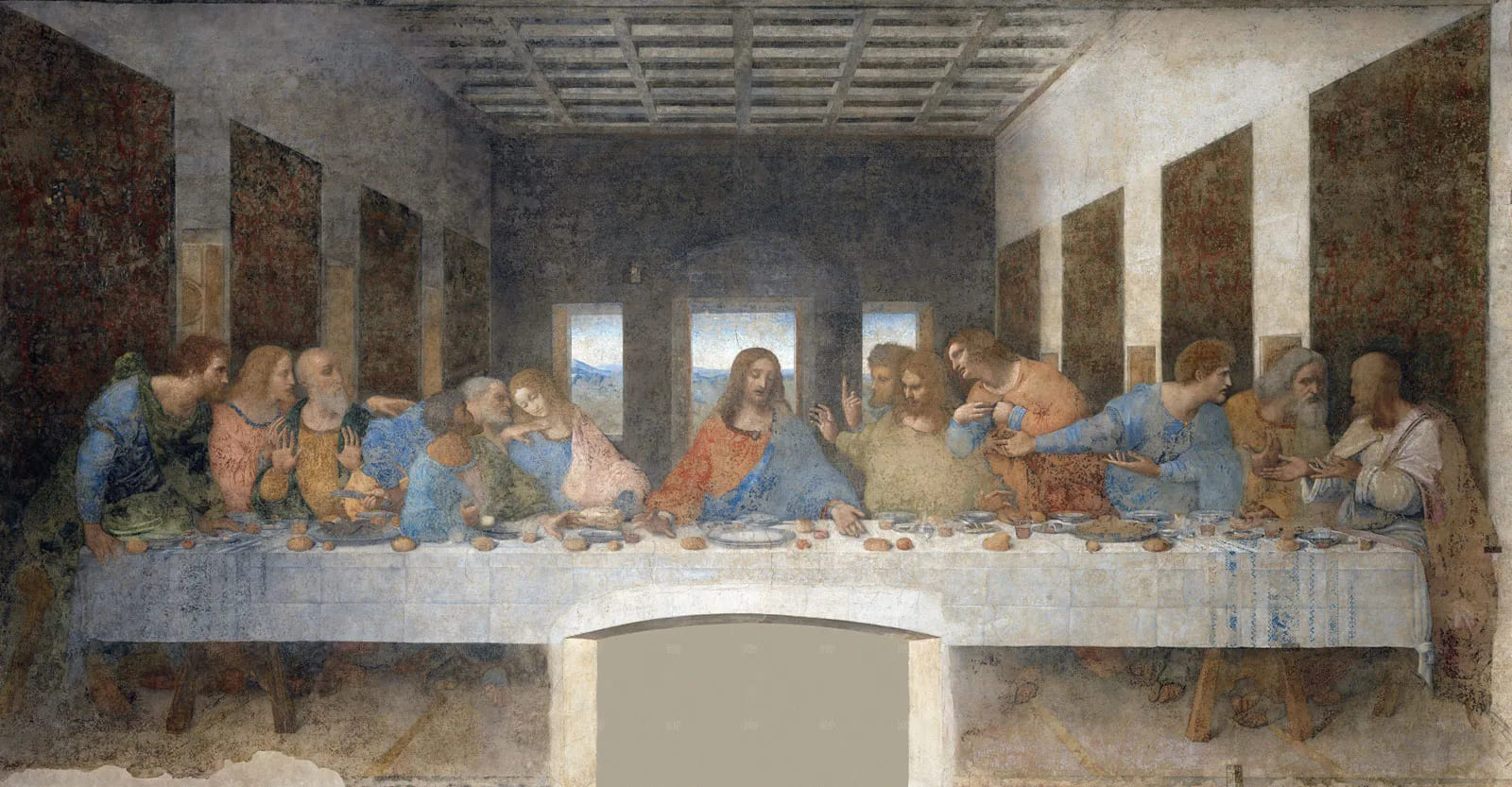
- Chiaroscuro:
- Definition: The use of light and shadow contrast to create depth.
- Application: In Virgin of the Rocks, it produces a three-dimensional spatial effect.
- Example: Natural light illuminating figures in his paintings.
How Did Leonardo da Vinci Develop His Techniques?
According to The Notebooks of Leonardo, he refined his techniques through meticulous studies of light, shadow, and human anatomy. By observing nature and experimenting on canvas, he created artworks that were both realistic and ethereal, blending precision with artistic vision.
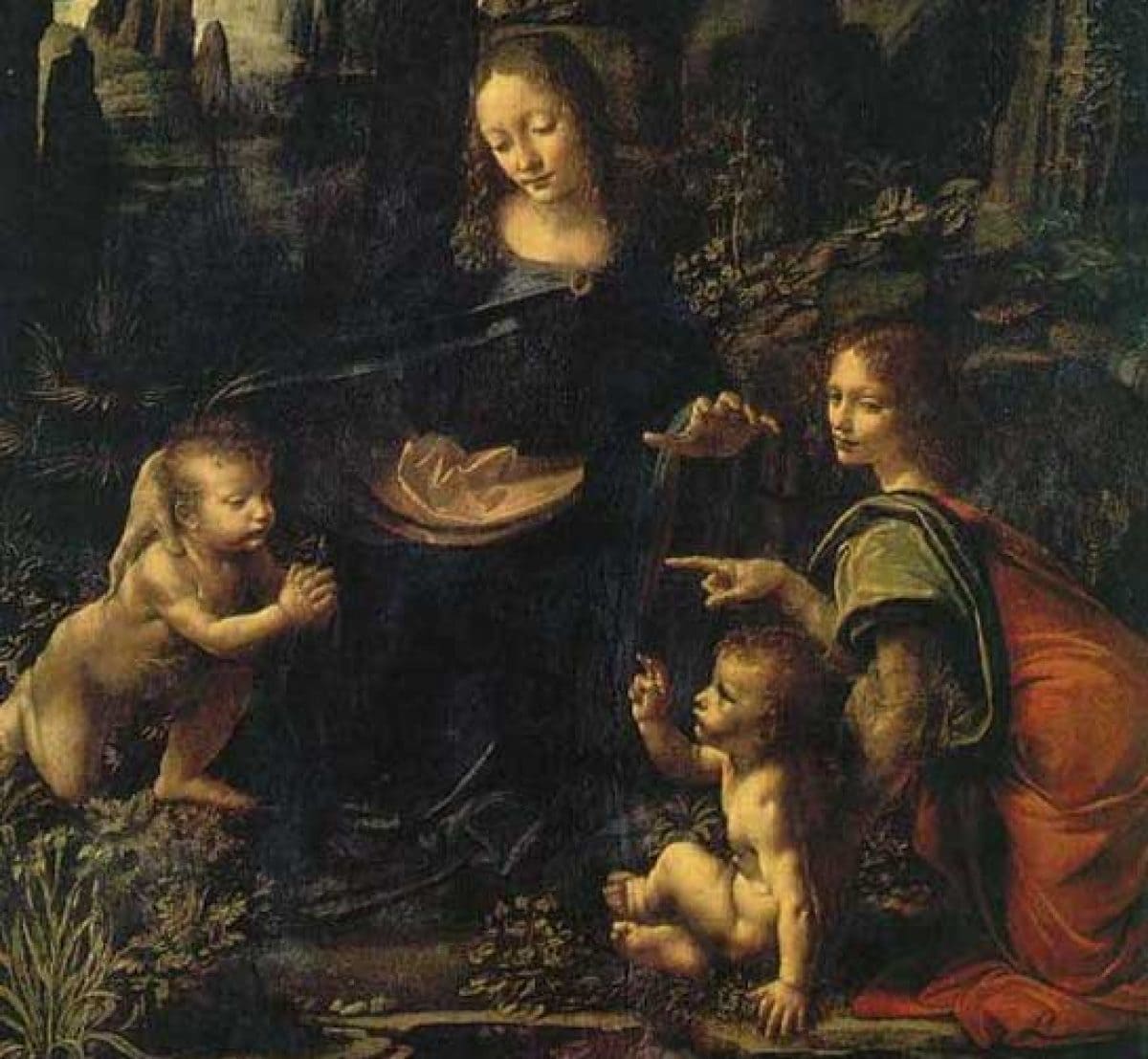
Contributions of Leonardo da Vinci
What Did Leonardo da Vinci Contribute to Humanity?
Leonardo da Vinci’s contributions extend far beyond art, encompassing science, engineering, and philosophy:
- Art:
- Revolutionized painting with sfumato and chiaroscuro, influencing artists like Raphael and Michelangelo.
- Created masterpieces like the Mona Lisa and The Last Supper, enduring cultural icons.
- Science and Engineering:
- Anatomy: Produced detailed sketches of muscles and the circulatory system.
- Machines: Designed visionary concepts like flying machines, tanks, and crossbows, centuries ahead of their time.
- Astronomy: Hypothesized that the Earth orbits the Sun, foreshadowing Copernicus’ discoveries.
- Philosophy:
-
- Believed art, science, and nature were interconnected, as reflected in his words:
“Through art, we may be called the grandchildren of God.” (The Notebooks)
-
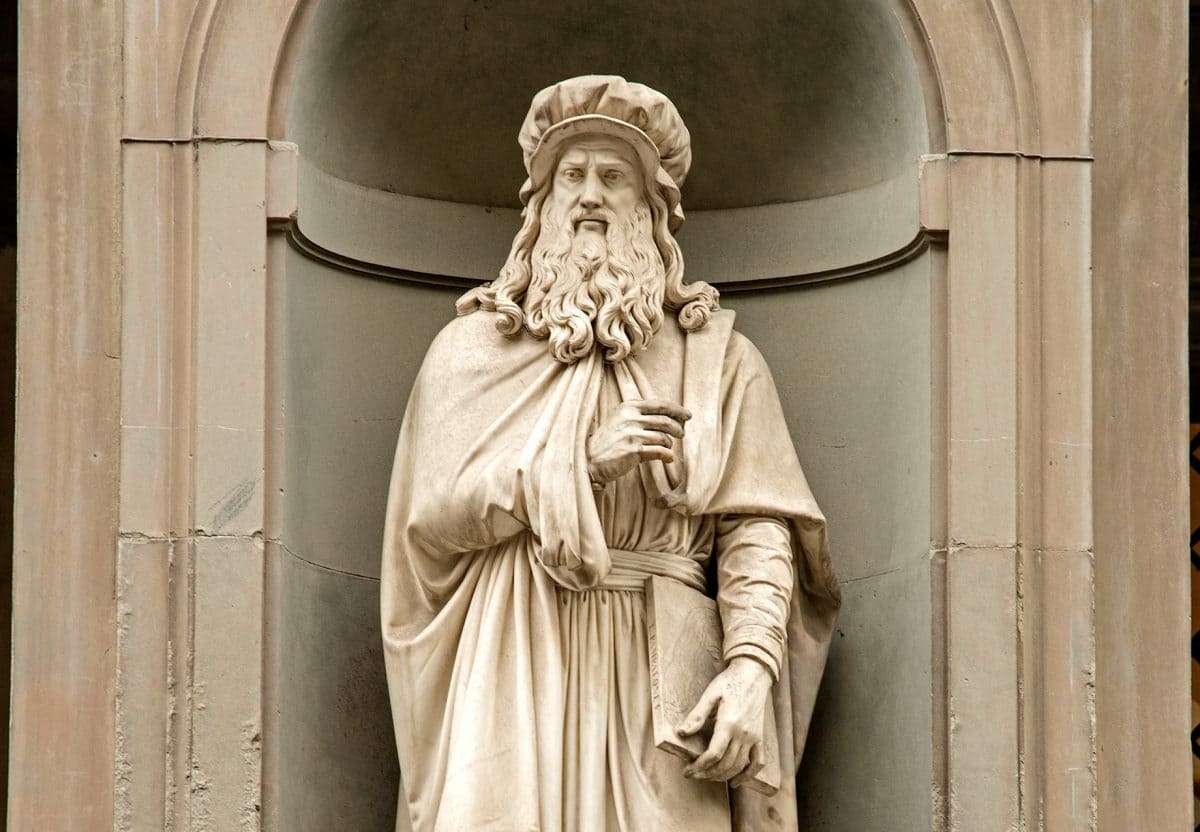
Why Is Leonardo da Vinci Called a Renaissance Genius?
Leonardo da Vinci embodied the Renaissance spirit by blending artistic and scientific inquiry, creating a holistic vision of the universe. According to VnExpress, his insatiable curiosity, creativity, and drive for exploration make him a timeless symbol of the Renaissance era.
Influence of Leonardo da Vinci in Vietnam
How Did Leonardo da Vinci Influence Vietnamese Art?
Though Leonardo da Vinci lived far from Vietnam, his works and techniques inspired Vietnamese art, particularly through artists trained at the École des Beaux-Arts de l’Indochine:
- Tô Ngọc Vân: Adopted chiaroscuro to add depth to his oil paintings.
- Trần Văn Cẩn: Applied Leonardo’s compositional finesse to Vietnamese landscape paintings.
- Art Exhibitions: Galleries in Hanoi and Ho Chi Minh City often display works influenced by Renaissance aesthetics.
How to Identify Leonardo da Vinci’s Influence?
- Painting Techniques: Look for the use of light and shadow in Vietnamese oil paintings.
- Themes: Paintings of human figures and nature reflecting Renaissance ideals.
- Art Education: Vietnamese art schools teach Leonardo’s techniques as part of art history curricula.
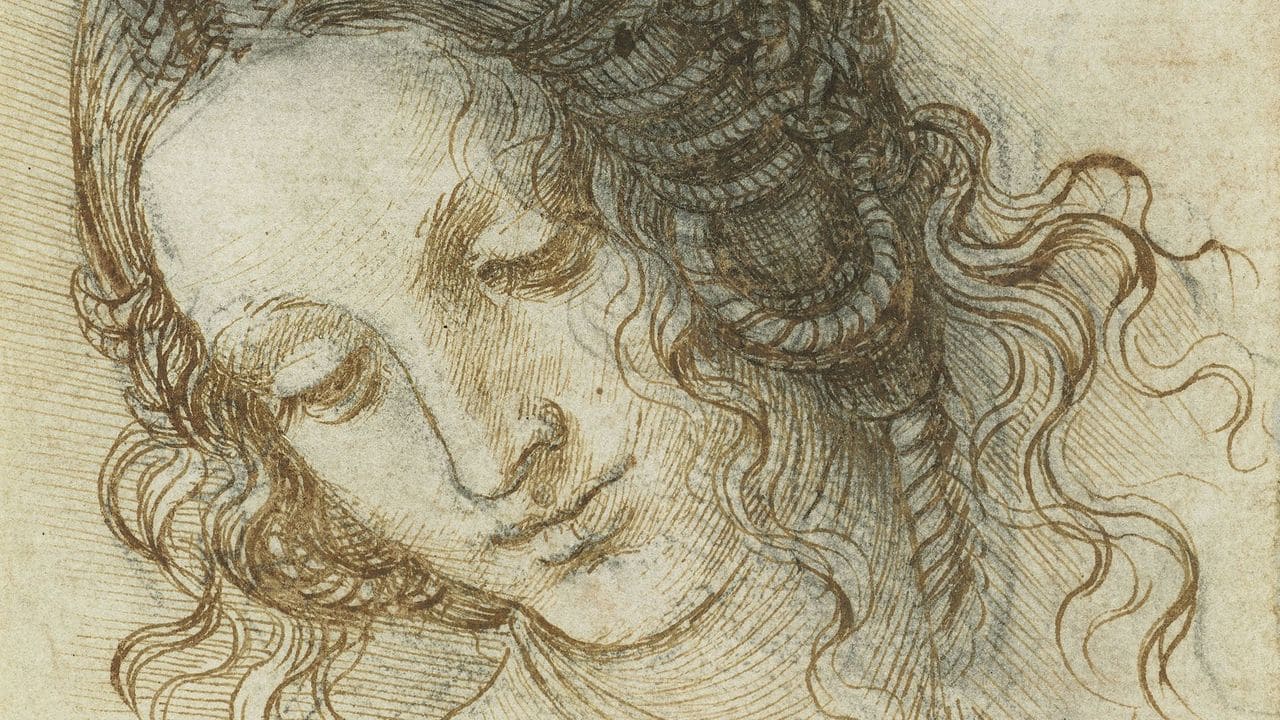
Approaching Leonardo da Vinci’s Art
How to Approach Leonardo da Vinci as a Beginner
- Visit Museums: View the Mona Lisa at the Louvre or Leonardo’s sketches at the Uffizi Gallery in Italy.
- Read Books: Works like Leonardo da Vinci by Walter Isaacson offer deep insights into his life.
- Watch Documentaries: Explore films like “Leonardo: The Man Who Changed the World” on Netflix or YouTube.
- Try Painting in His Style: Experiment with sfumato or chiaroscuro to recreate his techniques.
Tips for a Deeper Understanding
- Study His Notebooks: Explore The Notebooks to understand his interdisciplinary thinking.
- Compare with Other Renaissance Artists: Contrast Leonardo’s works with those of Michelangelo and Raphael to highlight his uniqueness.
- Take Courses: Enroll in online courses on Coursera about Renaissance art for deeper knowledge.
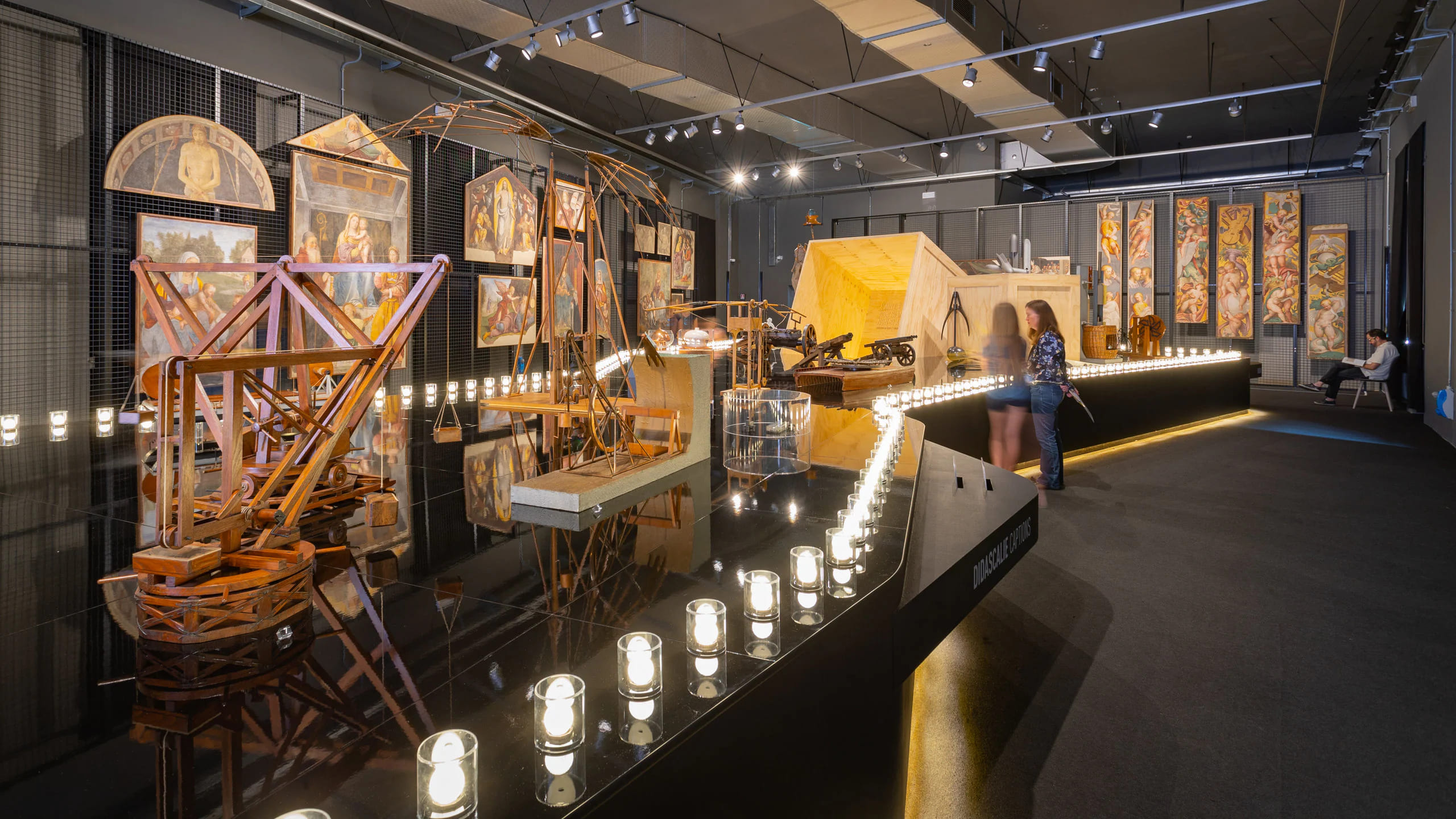
Leonardo da Vinci was not only a painter but also a scientist, engineer, and philosopher, leaving an enduring legacy through masterpieces like the Mona Lisa and The Last Supper. With techniques like sfumato and chiaroscuro, he shaped Renaissance art and inspired the world. Explore Leonardo da Vinci through museums, books, or by experimenting with his techniques to feel his genius. Share this article to spread the story of this Renaissance visionary!
Next Steps:
- View the Mona Lisa online or at the Louvre Museum.
- Learn more about Leonardo da Vinci’s contributions through books or online resources.
- Share this article to inspire friends to discover the genius of Leonardo da Vinci!
